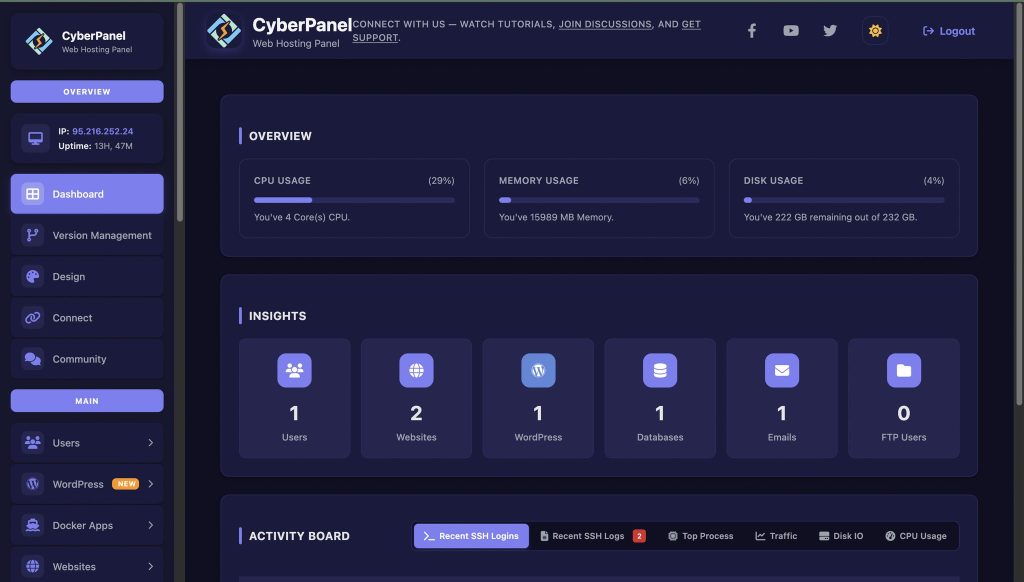Remote desktop access has become vital for IT professionals in today’s technology-driven world, including developers, systems administrators, and support personnel. Once you begin to manage multiple remote connections across different protocols, like RDP, SSH, and VNC, the entire process can begin to get out of hand. Guacamole Docker is a containerized solution designed to deploy, manage, and scale Apache Guacamole, the popular clientless remote desktop gateway.
With Guacamole running in Docker, you can avoid the frustration of executing a manual installation and the use of dependencies. You can spin up a fully operating remote access platform in minutes while retaining consistency across environments. Whether you’re managing a small home lab or an entire enterprise-level infrastructure, Docker Guacamole gives you the flexibility and ease of use necessary to organize and secure all your remote connections.
In this guide, we will review what Guacamole Docker is, how it works, and how to configure it using Guacamole Docker Compose. We will also look at utilizing Apache Guacamole Docker images and running Guacamole Docker Containers for personal and professional use.
With the solutions provided in this guide, you can run the complete solution with a single command, eliminating the need for extensive and complicated manual configuration. Guacamole is portable, consistent, and can be used in testing and production.
What Is Guacamole Docker?
Guacamole Docker is a containerized version of Apache Guacamole – an open-source remote desktop gateway providing browser-based access to your systems via RDP, SSH, or VNC. Docker packages Guacamole and its backend (guacd) into lightweight containers that are safe and easy to deploy and scale.
With Guacamole Docker, this whole process is managed with just a single command, as opposed to complicated manual configuration steps. Portable, consistent, suitable for testing and production, Guacamole Docker is a solid solution.
Get exclusive access to all things tech-savvy, and be the first to receive
the latest updates directly in your inbox.
How Does Docker Guacamole Work?
Docker Guacamole has two main containers:
- guacd – The backend daemon that communicates with all remote desktop protocols.
- guacamole – The frontend web interface users access through their web browser.
- The two containers communicate through a Docker networking environment with isolation to ensure secure operation. The user logs in through the browser, and Guacamole Docker connects the user to the remote system without the need for the user to download any local client software.
What are the Reasons to Use Guacamole Docker?
Here are all the main reasons that teams actually prefer Docker with Guacamole:
- Ease of Use: Set up is simple without additional complicated dependencies or installations.
- Portability: Deploy and run the same container in other environments.
- Scaling: You can simply replicate or scale your Guacamole container using Docker Compose Guacamole.
- Security: The isolation feature that containers provide adds a layer to vulnerabilities to the system.
- Maintenance: Updating or rolling back with Docker image tags makes maintaining activity easier.
Using Apache Guacamole Docker also keeps configurations consistent/integrates with other Dockerized services.
How to Deploy Guacamole Using Docker Compose
Using Guacamole Docker Compose simplifies managing multiple containers like guacd and Guacamole web. Here’s a sample docker-compose.yml file for setup:
version: '3'
services:
guacd:
image: guacamole/guacd
container_name: guacd
restart: always
guacamole:
image: guacamole/guacamole
container_name: guacamole
environment:
- MYSQL_HOSTNAME=db
- MYSQL_DATABASE=guacdb
- MYSQL_USER=guacuser
- MYSQL_PASSWORD=guacpass
- GUACD_HOSTNAME=guacd
ports:
- "8080:8080"
depends_on:
- guacd
- db
db:
image: mysql:8
container_name: guac_db
environment:
- MYSQL_ROOT_PASSWORD=rootpass
- MYSQL_DATABASE=guacdb
- MYSQL_USER=guacuser
- MYSQL_PASSWORD=guacpass
volumes:
- db_data:/var/lib/mysql
volumes:
db_data:
Output:
Once deployed, access Guacamole in your browser at http://localhost:8080/guacamole.
You’ll see a login page where you can authenticate and manage all your remote connections through a unified dashboard.
Advantages of Apache Guacamole Docker
Dockerizing Apache Guacamole provides all of Guacamole’s core functionality, plus Docker’s reliability (e.g., consistent builds and fast recovery) and lightness compared to VM configurations or installing Guacamole on a physical machine with additional services (e.g., Nginx, VPNs, monitoring). This results in web-based access to your RDP, SSH, and VNC sessions in one centralized location. This is a great solution for sysadmins, IT teams, and developers managing infrastructure across multiple systems.
Running a Guacamole Docker Container
You can use this command to sign up a Guacamole Docker Container quickly:
docker run --name guacamole -d -p 8080:8080 guacamole/guacamole
You can then link it to a guacd container:
docker run --name guacd -d guacamole/guacd<br>Role of CyberPanel

If you are managing Docker containers on either VPS or dedicated servers, CyberPanel, a web hosting control panel can make deployment easier. Control panels can manage containers, monitor performance, and provide integrated DNS, SSL, and backups, with the ability to do these tasks using Docker, including a setup that has Guacamole included.

Final Thoughts!
Guacamole Docker can provide hassle-free management of remote desktop access via a web browser. You can use SSH, RDP, or VNC, and if you use Docker, installation, maintenance, and scalability are easily handled. Using Guacamole Docker Compose, you can get up and running with a fully functional enterprise solution in just a few minutes, on every environment you have it running in.
Are you ready to upgrade your remote access infrastructure? Try deploying Guacamole in Docker and take advantage of centralized management; you won’t be disappointed!
People Also Ask
What ports does Guacamole Docker use?
By default, Guacamole uses port 8080 for its web interface.
How do I persist Guacamole data?
You can use Docker volumes for MySQL or PostgreSQL databases to retain user and connection data.
Can I use Guacamole Docker Compose for setup?
Yes, Docker Compose simplifies a multi-container setup with guacd, database, and Guacamole frontend.



